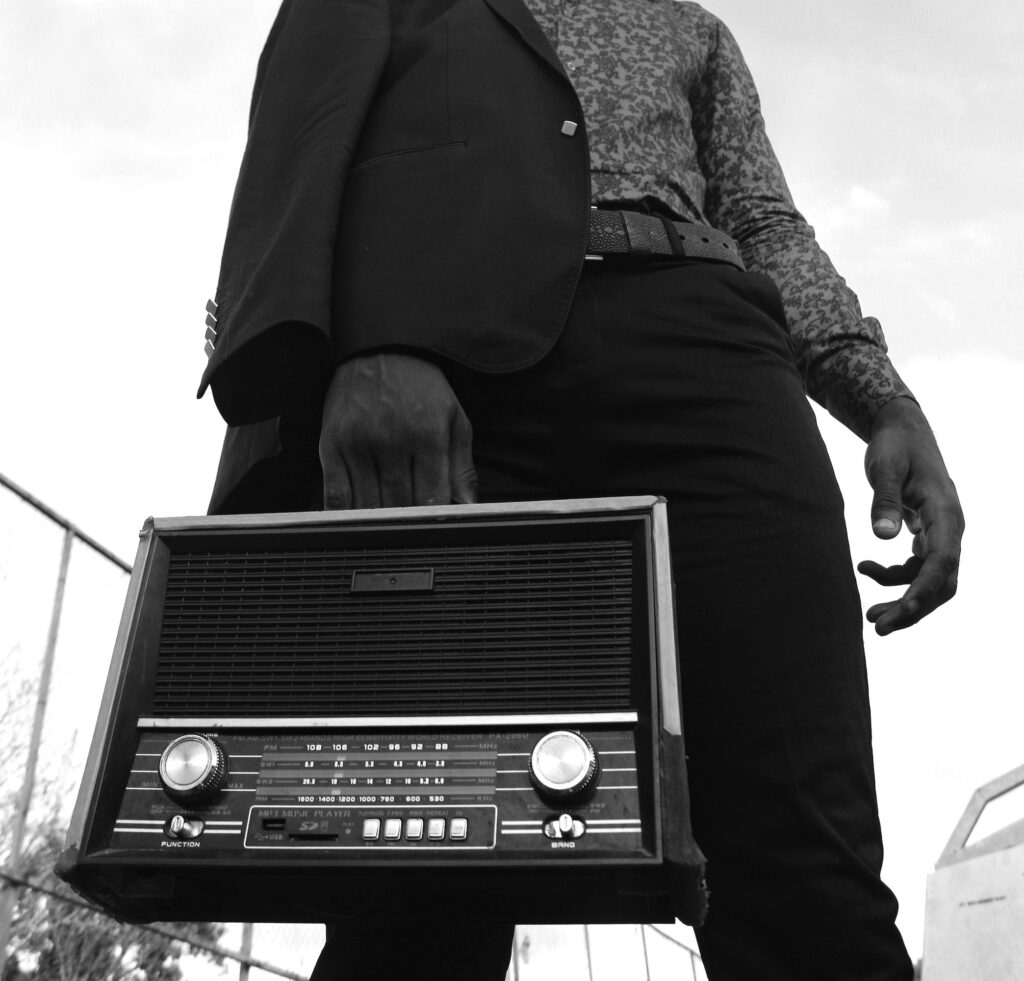Knowing If a Song Is in the Public Domain
Are you looking for music for your YouTube series or any other content you’re working on? Are you worried about the copyright status of the music you’re interested in? Are you asking constantly, “is this song copyrighted?” Well, don’t worry. It’s pretty easy to determine whether a song is in the public domain, royalty-free, creative commons, or otherwise available for use. Let’s go through the differences and how to figure it out!

What Are The Different Types of ‘Royalty-Free’ Music?
First, it’s important to understand that there are different types of music that are all technically royalty-free. However, we mean different things when we say these terms. Below are the different types of music that can be considered “royalty-free”:
- – Music that’s in the public domain
- – Royalty-free music
- – Music offered under a Creative Commons license
See? it can be a little confusing when they’re all under the same umbrella! But what are the differences between these terms? And how do you know what’s right for your type of media, and if a song is copyrighted?
Public Domain vs. Royalty-Free vs. Creative Commons
What Are the Differences?
The first thing you will need to understand are the differences between music that is in the public domain and royalty-free music. Music that is in the public domain has no restrictions around its use, and is free to use. Music that is royalty-free usually involves paying a single licensing fee, which then allows you to use that piece of music without restrictions. You can also subscribe to a service to pay a regular fee to use a whole library of music. On the other hand, Creative commons music allows you to use that piece of music, but under the restrictions given by that particular license.
See? It’s not as difficult as you may think to figure out the difference. But, what do these things actually mean?
What Does Public Domain Mean?
There are several different ways a piece of music or other content can end up in the public domain. Usually, it involves the copyright expiring, or the creator of that work allowing the copyright to end to purposely put the work in the public domain. Now, copyright laws differ by country.
In the United States, there are some pretty easy ways to figure out if a piece of music is in the public domain. Every piece of music published before 1924 is in the public domain; however, the sound recordings of music recorded before 1924 won’t actually be in the public domain until 2021.
That’s only because of a recent law, the Music Modernization Act. The law sets guidelines for music released up until the year 1972. Don’t get too excited; music recordings released between 1957 and 1972 won’t actually enter the public domain until February of 2067, so you’ll be waiting quite a while if you would like to use them in your next piece of media.
You might be better off looking around for music that has been purposely released into the public domain, or choosing to use music under a creative commons license or royalty-free music instead. There are a ton of resources online to find works that have been voluntarily added to the public domain, as well — you just might have to dig around a little bit!
What’s a Creative Commons License?
A Creative Commons license is basically a way for musicians and other artists to release their products in a way that allows other people to use their content, but that protects their rights and ensures that they still get credit for their work.
Creative Commons licenses may allow a piece of music to be used with credit, without credit, allow a piece of work to be remixed or only used unaltered, make the work available for personal, creative, or commercial use, or build upon the work. That means you’ll have to read the license of each piece of work carefully. Here are the different licenses currently offered by Creative Commons:
- CC BY 4.0 (Attribution 4.0: International)
- CC BY-NC 4.0 (Attribution: Non-Commercial 4.0: International)
- CC BY-ND 4.0 (Attribution: No-Derivatives 4.0: International)
- CC BY-SA 4.0 (Attribution: Share-Alike 4.0: International)
- CC BY-NC-ND 4.0 Attribution: (Non-Commercial, with No-Derivatives 4.0: International)
- CC BY-NC-SA 4.0 (Attribution: Non-Commercial Share-Alike 4.0: International)
As you can see, navigating the different types of Creative Commons licenses can be a little difficult. If you’re running short of time, or have enough of a budget at hand, you may want to try royalty-free music instead of music with a Creative Commons license.
How Can You Find Royalty-Free Music?
Royalty-free music is a little bit easier to come by than public domain music. That’s because you do pay a small fee to access most royalty-free music, so you don’t need to do as much searching around. However, in some cases, the artist of a royalty-free piece of music still owns the copyright, so it’s important to consider that when choosing a piece of music for your work. Royalty-free music makes it easier to find great songs that fit your project without wasting a ton of time, money, and energy doing the research.
“Is This Song Copyrighted?”
Now You Know!
As you have seen, it’s not nearly as difficult as you might think to answer the question, “is this song copyrighted?”.
There are some pretty easy ways that you can use to figure out the answer to that question for each song or piece of music you may want to use in your content. Or, ask for help from a professional, and avoid the hassle!
Are you interested in using royalty-free music for your next project? Check out Comma’s royalty-free music library today!